Beijing Winter Olympics competition venues are fully completed! How many do you know?
Cctv news(Reporter: Xu Yeqing, Wang Jingyuan) February 4th marks the first anniversary of the countdown to the opening of the 2022 Beijing Winter Olympics and Paralympic Winter Games. On January 21st, the competition venue of Beijing Winter Olympics was fully completed, and other preparatory work also entered a critical moment.
The upcoming Beijing Winter Olympics consists of 7 major events, 15 sub-events and 109 minor events. It is planned to use 25 venues, which are distributed in Beijing, Yanqing and Zhangjiakou. Among them, Beijing will undertake all ice projects, and Yanqing and Zhangjiakou will undertake all snow projects.
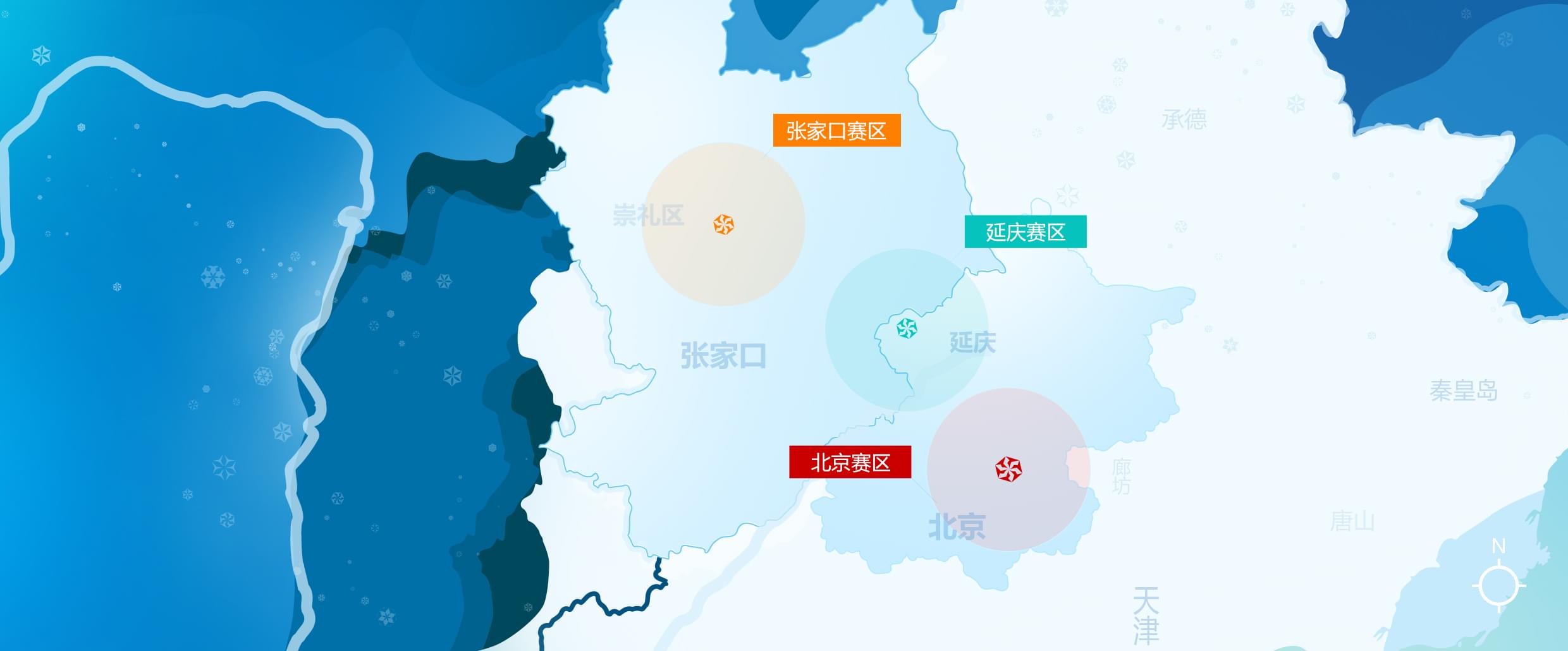
What are the 25 venues in the three major competition areas? What will it be used for after the game?
It is understood that the 25 venues planned for the Beijing Winter Olympics include 12 competition venues and 13 non-competition venues, namely 3 training venues, 3 Olympic villages, 3 award plazas, 3 media centers and 1 opening and closing venue. Of all the venues, 10 are existing, 6 are planned, 4 are for the Winter Olympics and 5 are temporary. All the new venues will meet the LEED standard of international green building evaluation and certification.
Beijing Division:
According to the plan, the Beijing Division will undertake all the ice events of the Winter Olympics, using a total of 13 competition and non-competition venues, including 8 existing venues, 4 new venues and 1 temporary venue. There will be 3 events (curling, ice hockey and skating), 5 events (curling, ice hockey, short track speed skating, figure skating and speed skating) and 32 events in Beijing Division.
Beijing Olympic Park is an important legacy of the 2008 Olympic Games, and will once again become the core area of the Winter Olympics in 2022. There are seven venues in the Winter Olympics within the Beijing Olympic Park.

There are 6 competition venues in Beijing Division, including 4 existing venues and 2 new ones. Water Cube, National Gymnasium, Wukesong Gymnasium and Capital Gymnasium will hold curling, ice hockey, short track speed skating and figure skating competitions respectively.
The newly-built National Speed Skating Hall is the landmark venue of Beijing main competition area and the only newly-built ice competition venue, which is vividly called "Ice Ribbon". The National Speed Skating Gymnasium is built by using the temporary venues for hockey and archery in the 2008 Olympic Games, and has the largest all-ice design in Asia, with an ice surface area of 12,000 square meters.

(National Speed Skating Hall "Ice Ribbon")
On January 22, 2021, the National Speed Skating Hall successfully made ice for the first time and successfully made a speed skating track. It is understood that after the Winter Olympics, it will become a permanent training ground for Chinese athletes’ ice events in the Winter Olympics, and it will also be open to Beijing residents to meet their winter sports needs.
In addition, the newly-built Shougang ski platform is the only venue for snow events in the central city of Beijing Winter Olympics, and will undertake freestyle and snowboarding platform events during the competition. After the games, it will be the first ski jumping platform in the world to be permanently reserved and used, and it will be open to the public and transformed into a sports theme park serving the public.

(Shougang ski jumping platform)
There are seven non-competition venues in Beijing, including the National Stadium (Bird’s Nest), the National Convention Center, the newly-built Beijing Olympic Village, and the Beijing Awards Plaza, as well as three training venues, namely the Shouti Short Track Speed Skating Hall, the Capital Skating Hall and the Shouti Comprehensive Hall.
Yanqing Division:
Yanqing Division is located in Yanqing District, northwest of Beijing Central City. There are 5 competition and non-competition venues, including 3 newly-built venues and 2 temporary venues. There will be 3 major events (alpine skiing, snowmobile and sleigh), 4 sub-events (alpine skiing, snowmobile, steel frame snowmobile and sleigh) and 20 minor events.
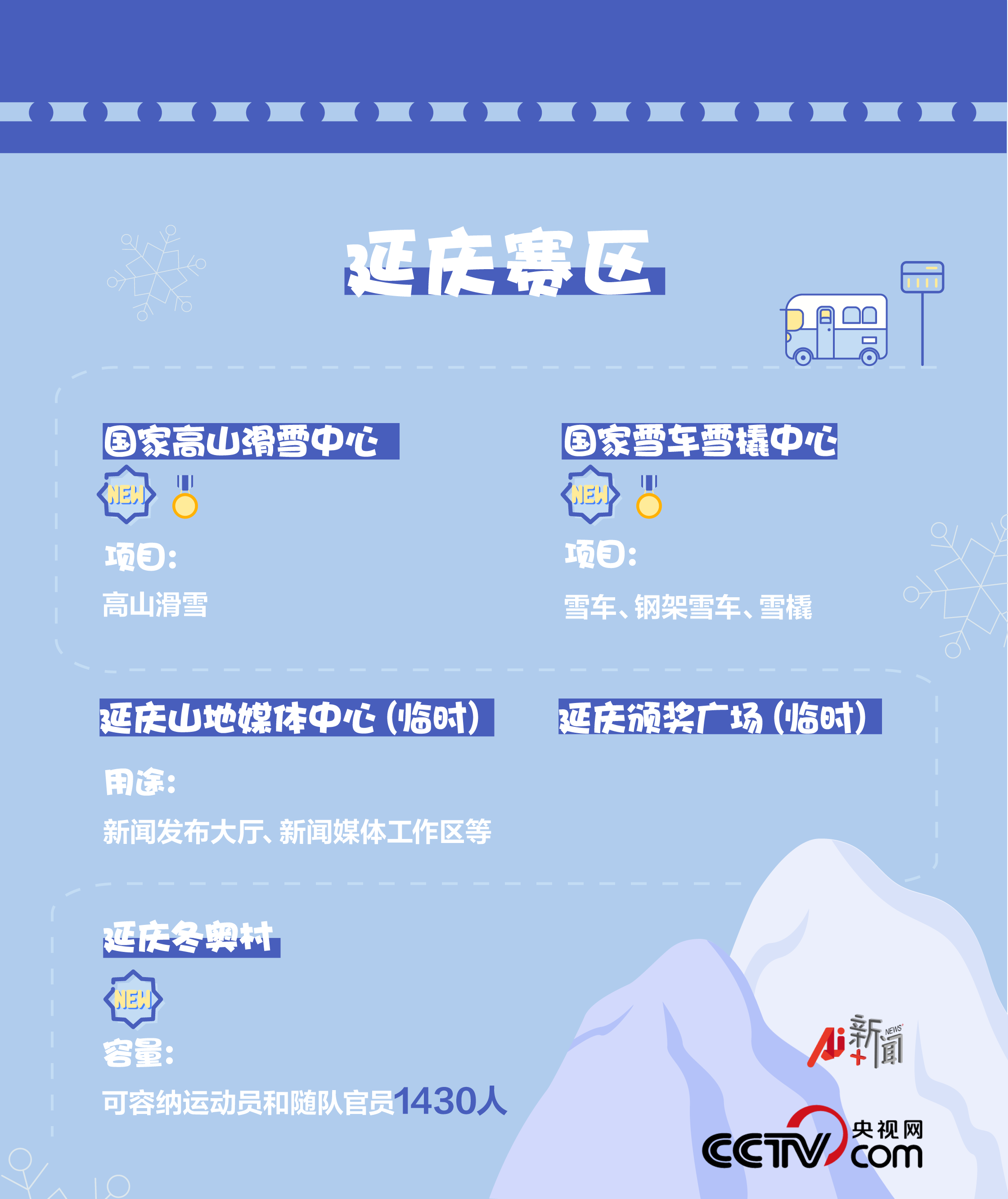
There are two competition venues in Yanqing Division, both of which are newly built. The National Alpine Skiing Center is built on the natural mountain shape of Xiaohaituo Mountain, with a total length of 21 kilometers and a drop of about 800 meters. It is the highest-level alpine skiing track in China and the only one that meets the standards of the Winter Olympics. It will be used to hold alpine skiing events.
With a total length of 1.9 kilometers, a vertical drop of 127 meters and 16 bends, the National Snowmobile Sled Center is one of the newly-built competition venues with the highest design difficulty, the most difficult construction and the most complicated construction technology in the Winter Olympics. During the Winter Olympics, it will undertake all the competitions of snowmobile, steel snowmobile and sleigh.
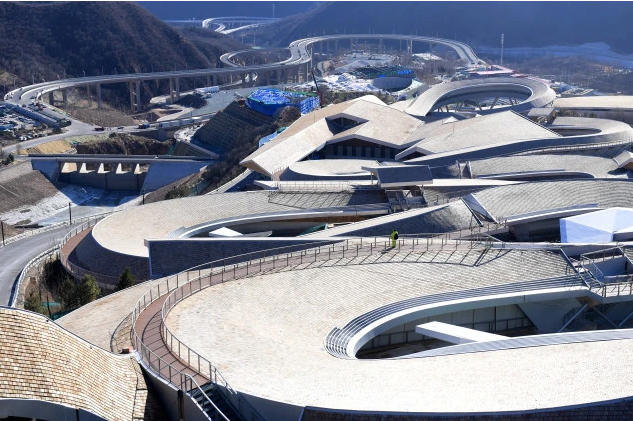
(National Snowmobile Sled Center)
There are three non-competition venues in Yanqing Division, including the newly-built Yanqing Winter Olympic Village and the temporary Yanqing Mountain Media Center and Yanqing Award Plaza.
According to Liu Yumin, Minister of Planning and Construction of Beijing Winter Olympic Organizing Committee, the National Alpine Ski Center, the National Snowmobile Sled Center and Yanqing Winter Olympic Village in Yanqing Division are all newly-built venues, which will be permanently preserved after the Games. Among them, the National Alpine Ski Center will be used for the training of China national team and professional teams at home and abroad and the holding of international competitions; After the national snowmobile sled center competition, a mass experience entrance will be added to carry out mass experience projects; Yanqing Dongao Village will be transformed into a hot spring resort hotel.
"A number of mass ski trails will be built in Yanqing Division to build a mountain sports and leisure park and an outdoor sports experience base, making the whole division a venue for major events and a mass ski center." Liu Yumin said.
Zhangjiakou Division:
Zhangjiakou Division is located in Chongli District, Zhangjiakou City, Hebei Province. There are 7 competition and non-competition venues, including 4 newly-built venues, 1 existing venue and 2 temporary venues. There will be 2 events (skiing and biathlon), 6 events (biathlon, cross-country skiing, platform skiing, nordic combined, freestyle skiing and snowboarding) and 51 events.
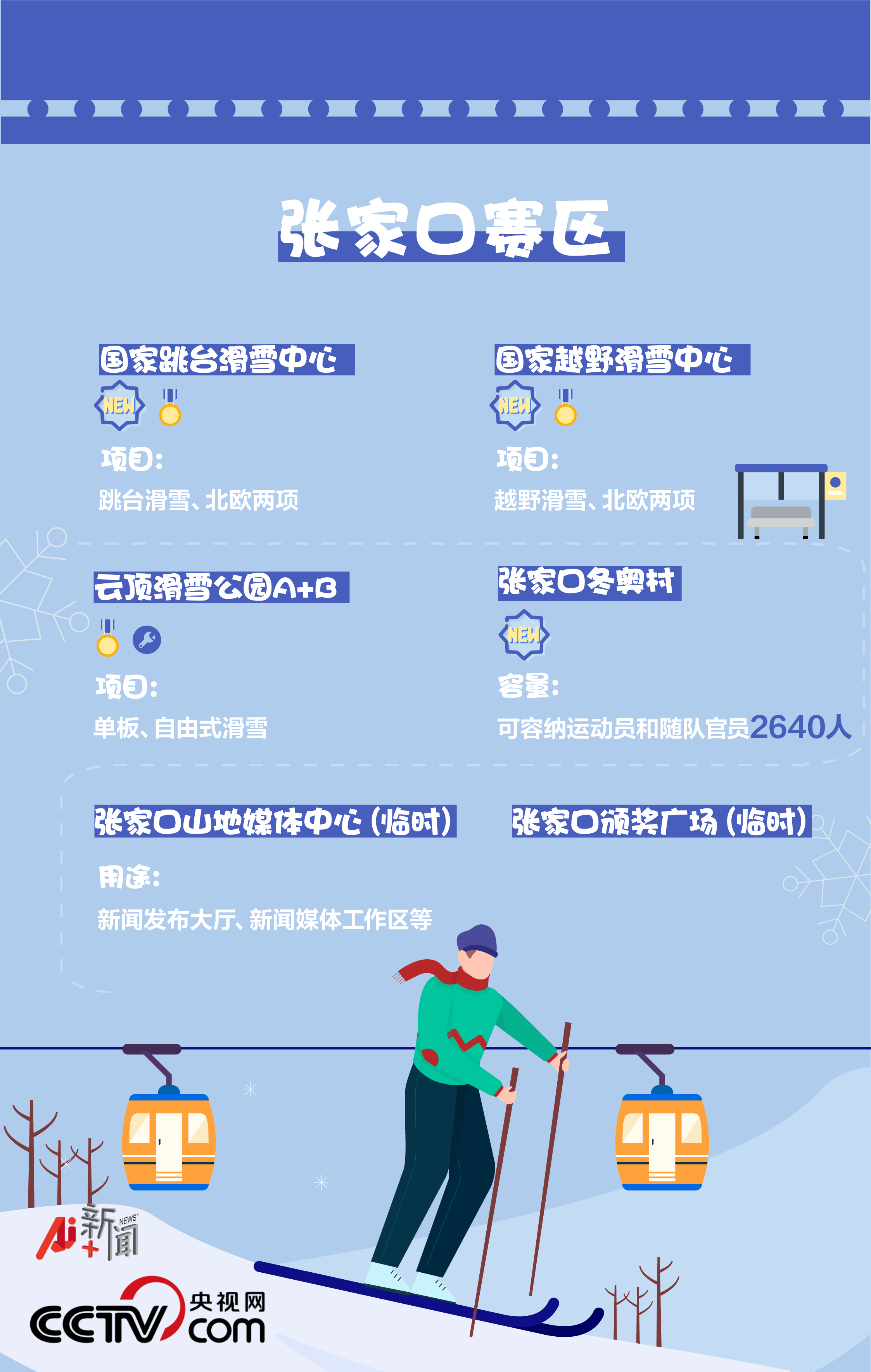
There are four competition venues in Zhangjiakou Division, including the National Ski Platform Center, the National Cross-country Ski Center and the National Biathlon Center, and the renovation and expansion of Miyuan Genting Park into Genting Ski Park.
National ski jumping center is the first ski jumping venue in China that meets international standards, and it is also the competition venue with the largest workload and the highest technical difficulty in Zhangjiakou host area. It will undertake the ski jumping in the Winter Olympics and the competition in nordic combined. The platform profile is vividly called "Snow Ruyi" because it fits the S-shaped curve of China traditional mascot "Ruyi". The National Platform Skiing Center consists of the Summit Club at the top of the mountain, the grandstand area at the foot of the mountain and two tracks. The two tracks consist of a big platform track with a drop of 136.2 meters and a standard platform track with a drop of 114.7 meters respectively.
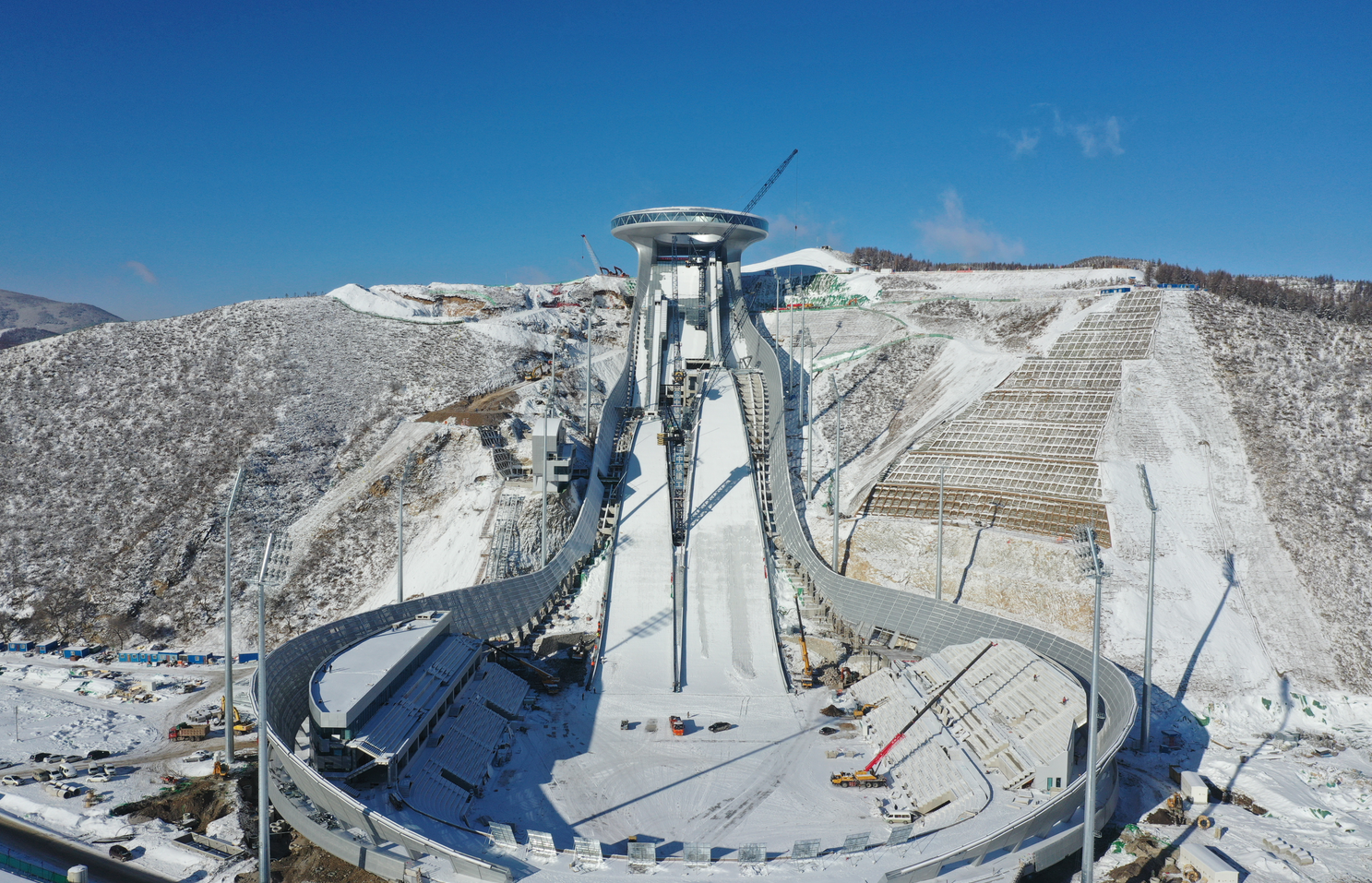
(National Platform Skiing Center)
The National Cross-country Skiing Center will undertake cross-country skiing and nordic combined in the Winter Olympics, the National Biathlon Center will undertake biathlon in the Winter Olympics and the Winter Paralympics, and Genting Ski Park will undertake snowboarding and freestyle skiing in the Winter Olympics.
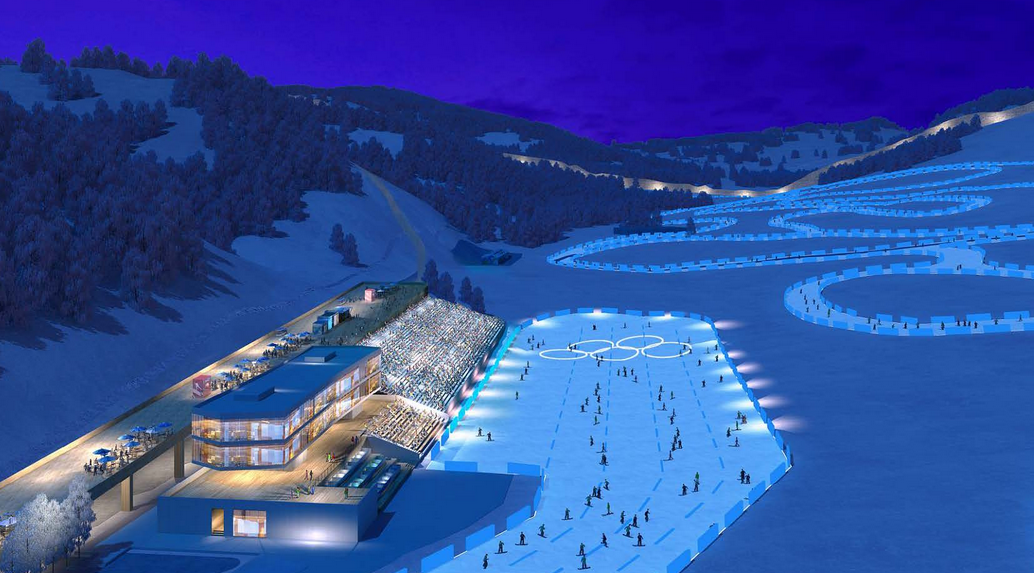
(National Cross-country Skiing Center)
There are three non-competition venues in Zhangjiakou, namely the newly-built Winter Olympic Village in Zhangjiakou, the temporary Zhangjiakou Mountain Media Center and the Zhangjiakou Prize Plaza.
Li Li, deputy director of Zhangjiakou Operation Center of Beijing Winter Olympics Organizing Committee, introduced that after the Winter Olympics, the "three games and one village" in Zhangjiakou Division (National Platform Skiing Center, National Cross-country Skiing Center, National Biathlon Center, Zhangjiakou Winter Olympic Village) will be permanently retained as Olympic heritage and become an Olympic park. At the same time, Zhangjiakou plans to build the core area of the Games into a world-class tourist destination by relying on Olympic resources.
"Black Technology" Helps Create a Green Winter Olympics
In the process of building venues in the three major Winter Olympics, low-carbon environmental protection has become the main direction of development, and green has become the background color of Beijing Winter Olympics construction.
"Ice Ribbon" realizes the most environmentally friendly and lowest carbon ice surface.The National Speed Skating Gymnasium "Ice Ribbon" is the world’s first Winter Olympics speed skating venue that adopts carbon dioxide transcritical direct cooling ice-making technology. This technology is the most advanced and environmentally-friendly ice-making technology in the world, with the carbon emission value approaching zero and the ice-making energy efficiency greatly improved. It is understood that after the game, the ice surface can be refrigerated in different zones, and the temperature of each ice can be controlled separately to realize the "simultaneous operation and different use" of the venue. Two key design schemes, the integrated design of ice-making system and the structural design of ice plate, have been patented.
Winter and summer projects are converted into venue standard in both directions.The Beijing Division of the Beijing Winter Olympics makes extensive use of the venues of the 2008 Beijing Olympic Games to realize the two-way conversion of winter and summer events into the standard venues of the Beijing Division. The National Aquatics Center "Water Cube" is the venue for swimming, diving and synchronized swimming in the 2008 Olympic Games. During the 2022 Beijing Winter Olympics, the "Water Cube" will be transformed into an "Ice Cube" to undertake curling and wheelchair curling events.
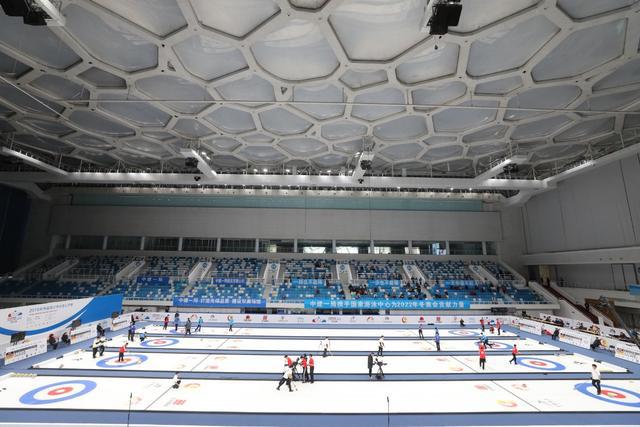
("Water Cube" becomes "Ice Cube")
In order to realize the "ice-water conversion", it is necessary to set up a curling track on the swimming pool, and add the ice function on the basis of maintaining the water function, that is, to build a convertible structure in the middle of the competition hall and install a detachable ice-making system, which is the first time in the history of the Winter Olympics.
The venues use 100% clean energy.As early as July 1, 2019, the first batch of seven Beijing Winter Olympics venues and supporting service facilities, such as the National Stadium (Bird’s Nest) and the National Aquatics Center (Water Cube), have officially used green electricity. Huang Hui, director of the Urban Venue Construction Division of Beijing Major Project Office, said that with the commissioning of the world’s first 500,000-volt Zhangbei flexible DC power transmission and transformation project in June last year, green and clean power such as wind power and photovoltaic power from Zhangjiakou officially entered Beijing, and by 2022, all venues will realize 100% use of green power. In addition, the venues and facilities of the Beijing Winter Olympics will be used for a long time and sustainably after the games, achieving a win-win situation in terms of benefiting the people, sports and urban and regional development, and building an Olympic sports industry chain.